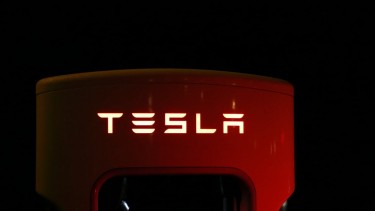Bay Area Sees Decline in Carbon Emissions Thanks to Electric Vehicles
By Dabbie Davis
Apr 05, 2024 07:22 AM EDT

According to research from the University of California, Berkeley, boosting the use of electric vehicles in some Californian locations has a favorable effect on lowering carbon dioxide emissions. The study, released on Thursday, underlines a significant advancement in the state's transition towards achieving net zero emissions.
Less Carbon Emissions in Bay Area
Through a meticulous sensor network deployment across the vibrant San Francisco Bay Area, renowned for its prevalent use of Teslas and other electric vehicles, scientists have observed a consistent and gradual decline in the release of greenhouse gas emissions annually.
As reported by the Daily Tribune, it was stated, "From atmospheric measurements, it is demonstrated that the integration of electric vehicles is proving effective in reducing CO2 emissions," mentioned Ronald Cohen, the lead author of the study and a chemistry professor.
The escalation of carbon dioxide levels stands as a primary catalyst for global warming, a phenomenon primarily driven by human activities that significantly impacts worldwide climate patterns.
Scientific consensus emphasizes the urgent need for nations to swiftly transition away from fossil fuel combustion to mitigate global temperature increases to a controllable extent and prevent severe environmental crises.
The majority of carbon dioxide emissions, exceeding two-thirds, stem from urban centers; however, detailed data regarding these emissions remains sparse, creating uncertainty among policymakers on effective mitigation strategies.
Spearheaded by Cohen, a network of numerous sensors implemented since 2012 is gradually addressing this information gap. This sensor network has recorded a consistent annual decrease of 1.8 percent in emissions over a five-year duration, offering valuable insights into emission reduction efforts.
READ MORE: Polestar 7 Takes Center Stage in Brand's Lineup to Replace 2 in 2027
Cross-referencing the collected data with vehicle registration details in the Bay Area, where nearly one out of every 20 vehicles is either electric or hybrid, Cohen and his team derived the conclusion that the adoption of electrification was indeed yielding tangible results.
Regarding this, Cohen mentioned to AFP that California aims to achieve net zero emissions by 2045, necessitating an annual emission reduction of slightly over three and a half percent for the next two decades.
The Solution Against Carbon Emission
By lowering the amount of greenhouse gases released from car exhausts, the integration of electric transport is essential to lessening the effects of anthropogenic global warming, according to Tribune News Service.
Significant progress is being made in the direction of a cleaner transportation landscape, with the White House setting a national goal of having half of all new vehicle sales be zero-emission by 2030 and California approving a mandate in 2022 that requires all new vehicle sales to be zero-emission by 2035.
The decisions taken presently and in the immediate future will shape the destiny of upcoming generations, as underscored in the panel's comprehensive report.
Moreover, the report cited a study conducted last year by the Metropolitan Transportation Commission, the Association of Bay Area Governments, and the Bay Conservation and Development Commission, the projected cost of safeguarding Bay Area residences, businesses, and infrastructure solely from sea level rise amounted to an estimated $110 billion by the year 2050.
RELATED ARTICLE: CES 2024: Hyundai Unveils Using Hydrogen Energy and Software to Achieve Carbon Neutrality by 2050
Copyright @ MOTORTIMES, All rights reserved. Do not reproduce without permission.








